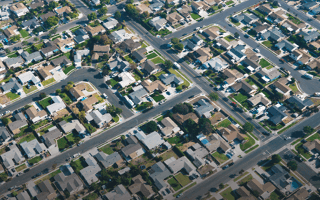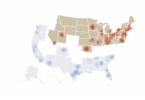It’s a Sprawl World
Urban sprawl has long been a pet cause for public transit and urban planning activists, and new research sheds some light on the effects of sprawl on Americans quality of life. A study by Smart Growth America has linked sprawl to physical inactivity, obesity, traffic fatalities, poor air quality, high residential energy use, long emergency response times, increased teenage driving and high private-vehicle commute distances and times.
The latest study, Measuring Sprawl 2014, examines the effects of sprawl in 221 metropolitan areas in the U.S. based on four primary factors: residential and employment density; neighborhood mix of homes, jobs and services; strength of activity centers and downtowns; and accessibility of the street network.
The study shows that residents who live in compact, connected metro areas have greater economic mobility. Individuals in these areas spend less on the combined cost of housing and transportation, and they have greater options for the types of transportation to take. In addition, residents of compact, connected metro areas tend to live longer, safer and healthier lives than their peers in metro areas with sprawl. Obesity is less prevalent in compact counties, and fatal car crashes are less common.








